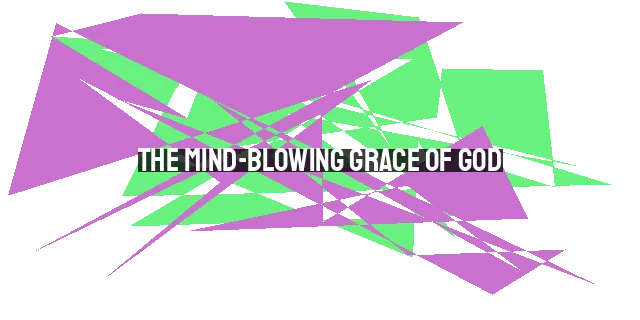Exploring the Trinity: Understanding the Unfathomable
Exploring the Trinity: Understanding the Unfathomable
One of the most challenging, yet fascinating, aspects of Christian theology is the doctrine of the Trinity. Christians believe in one God who exists in three persons: the Father, the Son, and the Holy Spirit. This unique concept has been a topic of debate and discussion for centuries, and many have tried to explain the Trinity in various ways. While there is no single, comprehensive explanation of the Trinity, it is possible to gain a deeper understanding of this doctrine by exploring some of the key aspects of it.
The Biblical Basis for the Trinity
Before delving into the intricacies of the Trinity, it is important to establish its biblical basis. While the word "Trinity" is not explicitly mentioned in the Bible, the concept is present throughout the Old and New Testaments. For instance, in Genesis 1:26, God says, "Let us make man in our image, after our likeness." Here, God uses the plural pronoun "us," indicating that there is more than one person within the Godhead.
In the New Testament, we see the three persons of the Trinity present at Jesus' baptism. As Jesus comes up out of the water, the Holy Spirit descends on him in the form of a dove, and the Father's voice is heard saying, "This is my beloved Son, with whom I am well pleased" (Matthew 3:17). This passage clearly demonstrates the presence of all three members of the Trinity in one place at one time.
Other passages in the New Testament that refer to the Trinity include the Great Commission (Matthew 28:19), where Jesus commands his disciples to baptize "in the name of the Father and of the Son and of the Holy Spirit," and Paul's benediction in 2 Corinthians 13:14, where he writes, "The grace of the Lord Jesus Christ and the love of God and the fellowship of the Holy Spirit be with you all."
The Mystery of the Trinity
Despite the clear biblical evidence for the Trinity, it remains a mystery that is beyond human comprehension. As the Apostle Paul writes in 1 Corinthians 13:12, "For now we see in a mirror dimly, but then face to face. Now I know in part; then I shall know fully, even as I have been fully known." In other words, our understanding of the Trinity is limited by our finite human minds.
However, just because we cannot fully understand the Trinity does not mean that we should not try to understand it to the best of our ability. As Jonathan Edwards writes, "We ought not to rest in our ignorance of it, but to search the Scriptures, and use our utmost endeavours to understand something of it" (Writings on the Trinity, Grace, and Faith, 139).
The Three Persons of the Trinity
One of the key aspects of the Trinity is the three distinct persons that make up the Godhead. Each person of the Trinity has a unique role and function, yet they are all equally God. The Father is the creator and sustainer of all things, the Son is the redeemer and savior of humanity, and the Holy Spirit is the comforter and guide for believers.
It is important to note that the three persons of the Trinity are not separate gods, nor are they three parts of one God. Rather, they are three distinct persons who are united in one divine essence. As the Athanasian Creed declares, "We worship one God in Trinity, and Trinity in Unity; neither confounding the persons nor dividing the substance."
The Father
The first person of the Trinity is the Father, who is often referred to as the "first cause" or the "source" of all things. The Father is the creator of the universe, and he sustains all things by his power and wisdom. He is also the one who sent his Son, Jesus Christ, to redeem humanity from sin and death.
One of the key attributes of the Father is his love. As John 3:16 declares, "For God so loved the world, that he gave his only Son, that whoever believes in him should not perish but have eternal life." The Father's love for his creation is demonstrated in his willingness to send his Son to die for us.
The Son
The second person of the Trinity is the Son, who is also known as Jesus Christ. The Son is the one who became flesh and dwelt among us (John 1:14), and he is the one who died on the cross for our sins and rose from the dead on the third day. Through his death and resurrection, the Son made it possible for us to be reconciled to the Father and to receive eternal life.
One of the key attributes of the Son is his obedience to the Father. As Jesus declares in John 6:38, "For I have come down from heaven, not to do my own will but the will of him who sent me." The Son's obedience to the Father is a reflection of the perfect unity that exists within the Trinity.
The Holy Spirit
The third person of the Trinity is the Holy Spirit, who is often referred to as the "comforter" or the "helper" of believers. The Holy Spirit is the one who convicts us of sin, guides us in truth, and empowers us to live the Christian life.
One of the key attributes of the Holy Spirit is his role in sanctification. As Paul writes in 2 Thessalonians 2:13, "But we ought always to give thanks to God for you, brothers beloved by the Lord, because God chose you as the firstfruits to be saved, through sanctification by the Spirit and belief in the truth." The Holy Spirit is the one who enables us to grow in holiness and become more like Christ.
The Unity of the Trinity
While the three persons of the Trinity are distinct in their roles and functions, they are united in their essence. This unity is often referred to as the "perichoresis" of the Trinity, which means "mutual indwelling." Each person of the Trinity dwells within the other, and they are in constant communion with one another.
This unity is demonstrated in Jesus' prayer for his disciples in John 17:21-23, where he prays, "That they may all be one, just as you, Father, are in me, and I in you, that they also may be in us, so that the world may believe that you have sent me. The glory that you have given me I have given to them, that they may be one even as we are one, I in them and you in me, that they may become perfectly one, so that the world may know that you sent me and loved them even as you loved me."
Conclusion
The doctrine of the Trinity is one of the most profound and mysterious aspects of Christian theology. While we may never fully understand it, we can gain a deeper appreciation for it by exploring its biblical basis and key aspects. As we contemplate the unity and diversity of the Trinity, we are reminded of the infinite wisdom, power, and love of God. May we continue to seek to know him more fully, even as we acknowledge the limits of our understanding.



POST COMMENT
For post a new comment. You need to login first. Login
COMMENTS(0)
No Comment yet. Be the first :)